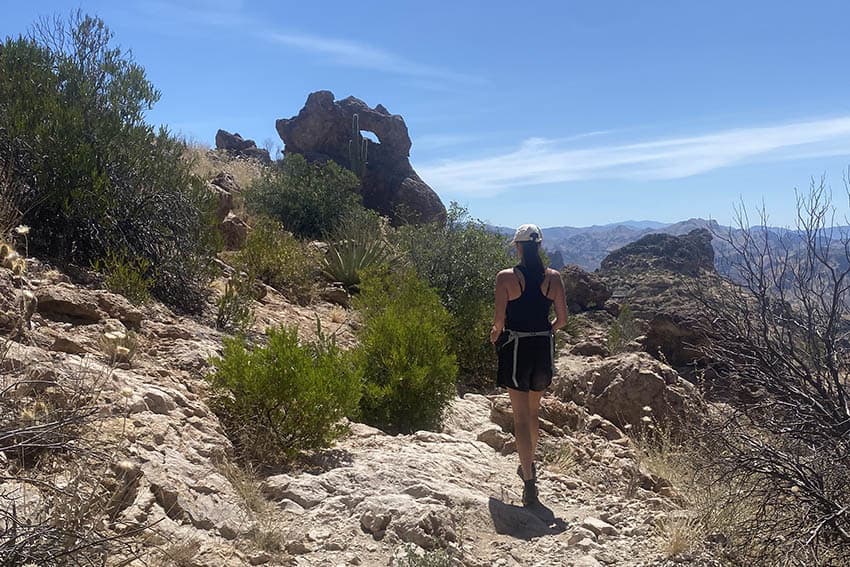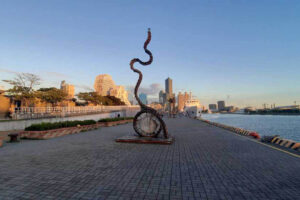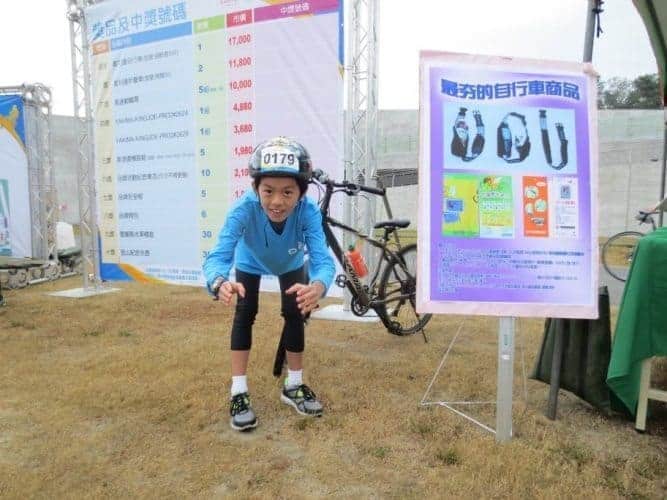 Taiwan on Two Wheels: Cycling in one of Asia’s rising adventure tourism destinations
Taiwan on Two Wheels: Cycling in one of Asia’s rising adventure tourism destinations

By Larry Parnass
Here in Nantou County, in the mountainous heart of Taiwan, the country’s largest natural lake calls to people who want to test themselves. Wet or dry.
Every fall, tens of thousands of people show up to swim three kilometers across Sun Moon Lake, famous for its morning mists.
The morning we arrived, it was comparatively quiet. Seeking another sort of challenge, 2,000 people — racers and casual riders alike — had signed up to pedal 33 kilometers around the lake on a warm November day.
Making Memories
In Taiwan, I am learning, people believe in making memories. A lot of good ones here come astride a bike in a country that’s carving out a deserved bike-friendly reputation. Right at 6:30 a.m., after mass calisthenics at a lakeside pavilion, air horns sounded and Come Bike Day began.
A few professional riders fresh from a grueling mountain challenge the day before took off in the lead, with cycling clubs in hot pursuit. There went European cycling stars Jeremy Roy and Danish rider John Ebsen, who was fresh from winning the Taiwan King of the Mountain Challenge 2012 in nearby hills less than 24 hours before.
And then the rest of us rolled out: parents and children, couples, lone riders, work friends and a woman riding with two parrots on her handlebars.
River of Riders
Our river of riders, dressed in matching blue jerseys, climbed past temples and rolled through cool glades overlooking the lake’s hidden coves. We paused to gobble ripe bananas and snap photos.
It was all over by 9 a.m., but promoters of cycling in Taiwan have a lot in store, around the year, for people who share a love of riding. From bike-sharing in big cities to bike lanes on lonely country roads to a growing list of cycling events, Taiwan is looking to get noticed by riders worldwide.
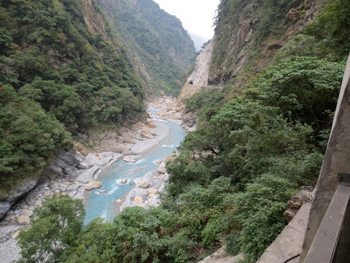
In a recent week in Taiwan, a friend and I visited a few of its best-known cycling areas, toured one of the country’s top bike manufacturing plants and explored Taipei’s bike trail network.
We also managed to catch breakfast, in Kaohsiung, with one of Taiwan’s international bicycling ambassadors, Ming-Jiing Hsieh, a retired luggage maker who has pedaled across Canada and once spent four months riding from Cairo to Capetown.
He told us, “A bicycle is our best companion. On a bicycle we can travel anywhere and make friends anywhere in the world.”
For riding joy, nothing topped the early morning we spent circling the gorgeous lake that’s part of one of Taiwan’s most popular scenic areas. Event organizers didn’t quite close the lake’s necklace of roads, but our numbers and the fact that it was an early Sunday morning enabled us to think, for a time, that two wheels rule.
Coffee from the 7-11
We climbed, cornered, and glided around the 3-square-mile lake, fueled by strong coffee bought before the sun was up, at one of Taiwan’s ubiquitous 7 Elevens.
Near the end of our ride, as a celebration got cranking at the Ita Thao Visitor Center, we came upon a lakeside campground and met Li-Hua Lee and Cheng-Hsiung Hsieh, two computer science professors at a nearby college who’d already completed their loop.
Lee and her young daughter managed to finish ahead of the parrots as well as several dogs we’d passed riding in bike baskets. The day was warming here at the lake’s edge and the campground was abuzz with children as families cooked their Sunday breakfasts.
Lee said her family came for the pleasure of a night away and the fun of riding this famous route.

Bicycling’s popularity is growing fast, Lee said. Come Bike Day both taps into that and ups the ante. “In just 10 years, people are starting to enjoy bicycling. In every household, people bike,” she said. “They keep promoting it.”
Bike Lanes Coming
In her home town of Puli, for instance, the mayor is pushing to add bike lanes. “The population of bike people is increasing in Taiwan,” Hsieh added.
Bicycling has always been an option for travel here, as it has been across the Taiwan Strait on the mainland. One volunteer at Come Bike Day, Po Liang Chang, a farmer in his 50s who tends a one-acre tree farm, told me he has ridden since he was a child.
“It comes naturally to our people to use bicycles before we had cars.” But he knows of only one person who commutes by bike, in part because roads in the most congested areas here, including the major cities on the more-protected west coast, can still pose risks for cyclists.
That’s not the case on the east coast, though. From Yilan near the north end of the east coast on down to Taitung, a landscape of coastal plains and foothills offers great riding on secondary routes where cyclists aren’t crowded out by cars and trucks.
German Biking Women
That’s where Manu Hess and Margaret Koller, two German women who live in Singapore, were headed on the day I met them inside Taroko National Park. It was just before 8 a.m. and the sun was topping cliffs of mountains that rim the gorge. The two had spent the night camping nearby and were up and off on a new morning, making their way down one of the most scenic roads in Taiwan.
Riding in Burma
Hess and Koller travel with their bikes and have ridden in Burma and around Europe. They said they picked Taiwan this time because the weather and temperatures are right in October and November when it seldom rains. They’d been having fun pitching their tent as they went along and liked the generally good condition of the roads. “In the mountains, it’s really nice,” Hess said.
The two were eager to get down onto the Pacific coast, just a few hours on, and further away from the traffic on the north side of the island. My friend and I had tested the road here the night before, using bikes rented from the Silks Place Taroko, an elegant hotel offering rooftop hot tubs, to which we soon retreated.
After a train ride down from Taipei and a sometimes dizzying car journey up the narrow and twisting Central Cross-Island Highway, it was great to be out on a bike. We wanted to get a two-wheeled feel for the road, because we planned to watch racers climb it the next day in the Taiwan KOM, which takes riders up 105 kilometers from sea level to 3,275 meters of elevation near Mt. Wuling.
Bad Timing
We timed our exploratory ride poorly, for night was coming on and safety concerns drove us back after an hour. Heading west, this road only goes up, at grades of 15 to 21 percent.
The highway, sometimes called the American Money Road (thank you, Uncle Sam), is an engineering marvel that has enabled the park to provide access to its spectacular views.
To Hualien, on the Coast

As we made our way up it the day before, climbing west by car out of the coastal city of Hualien, the day’s tour buses were still chugging along.
At one stop, dozens of tourists bunched up along a short passageway that afforded views along the edges of the gorge. They panicked and scattered when a falling rock smacked into the pavement just feet away.
Racers also had to watch for fallen rock.
As the peloton came by early that Saturday morning, riders were bunched silently together, pushing their pace but aware they had to mind their stores of energy.
Back in Taipei a few days before, we’d meet some of the riders, as well as cycling sponsors and promoters, at an event on the impressive Sun Yat-Sen Memorial Hall. The Taipei media turned out and visiting professional riders from Europe took turns, with the help of translators, to describe the course they’d just inspected.
Francisco Mancebo said he’d never seen a road with so much climbing and promised to do his best. “Sometimes we think, ‘Why are we here,” said Jeremy Roy, who won the mountain stage in the 2011 Tour de France.

One veteran of this KOM course is Raphael Grinbaum, 59, a Dutch emigrant to Taiwan who calls himself “a happy amateur” as a rider and yet won the 55-and-over age group for the race when it was a bit shorter at 90 kilometers.
Police Escort
The year he won, Grinbaum was happy to have a police escort come up behind him as he neared the finish, where participants stand on their pedals and fight their way forward. “It gave me wings,” he said.
Grinbaum didn’t win his category in 2012, perhaps because the race lowered the age group to 50 and up. He came in very respectable third in his division, with a time of 4:52. Grinbaum is one of cycling’s biggest backers in Taiwan. “Racing already was quite popular, but it becomes more and more so,” he told me.
So is Greg Chang, a former competitor and member of the national cycling team from 1988 to 1995 who now helps organize races and runs a consulting company and dates the start of the cycling boom in Taiwan to 2008. “We never thought it could happen like this…. People think you need a grand challenge in your life.”
\Riders must qualify for the KOM and be able to finish in a minimum time, so race officials don’t have to deal with stragglers. “They just challenge their own individual time,” he said. One rider, Fraser Young, an expat from Canada, watched his teammate Ebsen ride to victory.
At the awards ceremony that night on the edge of Sun Moon Lake, Ebsen said he wanted to come back next year, even though the race had been grueling. He suffered a flat tire and had to fight to retake the peloton, taking the lead with about 8 kilometers to go. An Italian rider who came in fourth tipped his hat to the climb, saying, “In Italy, we have a lot of mountains, but not like this.”
Mountain Biking Tomorrow
As he celebrated his friend’s win, Fraser, who was just getting over an illness, planned to participate in a mountain-biking race the next day. He has lived in Taiwan for a decade, mixing bike racing with teaching English. Young recommends that cyclists focus on the east coast, calling its rides “phenomenal.”
I heard a few people say that the most common bucket list for the Taiwanese includes these three things: swim across Sun Moon Lake, climb the country’s tallest peak, Yushan (3,952 meters), and bicycle around the island — a roughly 1,000-kilometer ride that takes up to 10 days.
While visiting the Giant bicycle factory in the Taichung area on the west side of the island, we met the daughter of the company’s co-founder, King Liu. She was stopping in at the factory along with a group of riders making their way around Taiwan as part of a tour the company offers, complete with ground support and a chase van.
For people with enough time and money, that’s an appealing trip, though smaller-scale rides, like the one Hess and Koller were on, enable one to zero in on great landscapes and vistas.
The best place to head is the area Canadian racer Fraser Young likes — the east coast, which stretches from the beaches at Kenting National Park on the island’s southernmost tip, home to a popular summer music festival and a fall Ironman contest.
The lighthouse there is on Taiwan’s cycling map, for it is the starting point of a 500-kilometer ride for the toughest cyclists. That race starts at midnight and riders try to make it to a lighthouse at the island’s northern tip in 24 hours.
A Different Coast
The ride up the east coast is markedly different from Taiwan’s other coast. It’s easy to see why from night satellite photos of the island: all the lights are on the west side, home of big and commercially important cities like Kaohsiung, Tainan and Taichung — all the way up to Taipei.
Two north-south routes, highways 9 and 11, both have their charms as they travel the East Rift Valley and the coast. On Highway 9, cyclists pass through rice-producing areas and scenic foothills. More and more local communities are encouraging cycling by creating bike paths, the Taiwan Tourism Bureau reports. If I get back, I’ll be riding the East Rift Valley with a sleeping bag and tent.

After our tour of the Giant plant, we fueled up on a box lunch of dumplings and climbed onto a few of the company’s bikes (I had the “Relax” model, designed for leisure and fitness) for a 28-kilometer ride that turned out to be mainly uphill.
The route took us from the factory on the edge of Taichung through an industrial area with traces of old Taiwan coming up in unexpected places — rice paddies here and there, where farmers pull three harvests a year and mix in poppies.
We came to foothills and began climbing, eventually taking on a 5-kilometer ascent at an average grade of 8 degrees, though Violet Liu, a marketing manager with Giant’s Europe division, said the climb included stretches when we were climbing at 12 degrees. That’s nothing to the King of the Mountain racers but had some of us breathing robustly.
Near the end we arrived at a train station in an appealing old village that’s clearly on the tourist map. We finished at the “Broken Bridge” ruin at Longten, damaged by a 1935 earthquake, as the rain began to fall.
That ride turned out to be our most ambitious climb during the week. The easiest day of cycling, and one of the most fun, came in Taipei itself. On our last day in the city my friend and I rented bikes in the morning and headed out for six hours of travel along one of the most impressive urban bike networks I’ve seen.
Most of them offer river views. After renting at the Dadaocheng Wharf, we cruised first along the east bank of Danshuei River, heading south from the area near the Dihua Historical District.
Passing Commuters
We passed a few commuters and a lot of people just out getting exercise. A 2010 map produced by the Taipei City Government was a big help to us, for riders have a ridiculous number of options on where to go and what to see.
We followed one option up the Xindian River, which swings travelers around the south side of Taipei, at one point coming close to a big landmark, the Taipei 101 tower. The trail is wide and flat and views are spectacular across sections of the city and up toward Taipei’s dramatic fringe of mountains. Riverside parks offer many places to pause along this section of network.
Coming back on the other side of the river, we climbed the massive Dahan Bridge and used bike lanes to cross the Dahan River, then slowly made our way up the Sanchong side of the river and then back into Taipei itself.
While the routes are quiet and protected from the rush of vehicles, this ride is all about experiencing Taipei’s size and grandeur. You could spend a week riding this city’s bikeways without repeating many sections, hoping off to check out historic and cultural sights. On city roads, watch out, though. Here, motorbikes rule the road.
Hotel options
Long-haul bicyclists can book inns and hostels in small towns, or in motels in more settled areas.
In Taipei, we stayed at the Regent and at the Palais de Chine, two fine hotels in great locations.
In Yilan, the new Evergreen Resort Hotel, part of the EVA Air group, offers spa treatments and access to the region’s hot springs.
If your itinerary takes you into the more industrial and commercial west coast, the Splendor Kaohsing Hotel is a good choice in that southern city, as is the Windsor Hotel in Taichung.
Flying into Taiwan
When booking air travel, be sure to check availability with EVA Air, a Taiwan carrier that I found to be top-notch.
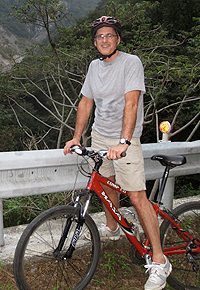
Larry Parnass is a columnist for the Berkshire Eagle newspaper. He lives in Ashfield, MA.
Read more articles about Taiwan on GoNOMAD
- Greece Getaway: Camping Hacks for Your Next Getaway - April 25, 2024
- Products and Clothing You Might Enjoy - April 25, 2024
- Saudi Arabia Might Be Your Next Getaway Spot - April 23, 2024


